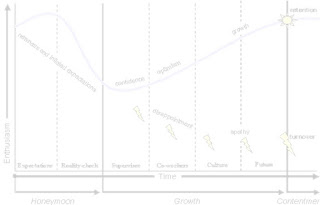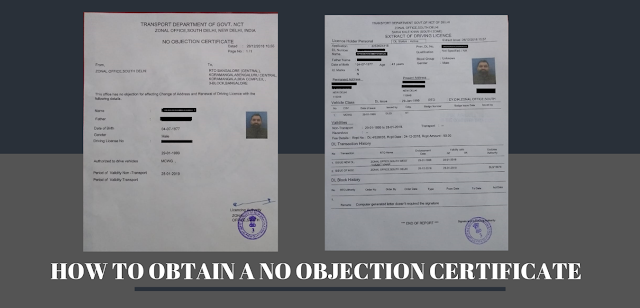The Motivation Lifecycle
An Evolutionary Process
As a call center manager or supervisor, you are regularly faced with the issue of agent turnover. Would it surprise you to discover that there are actual times indicators that can help you anticipate pivotal opportunities for intervention with new agents? It is possible to prepare for these opportunities, which are common to most people involved in new experiences, including new agents in your call center.
The Motivation Lifecycle will show you how this natural evolution works, and the critical timeframe during which supervisors and managers can have the most impact on their new agents.
There are certain universal truths that apply to nearly every new situation we experience. Whether it is buying a house, going to school, moving to a new town or starting a new job, there is a critical point early on when we make the decision to either change our situation, or commit to the future.
Let's look at how this evolutionary process plays out in the Motivation Lifecycle.
The Motivation Lifecycle depicts the initial period of a call center agent's employment. Depending on the actual rate of turnover at your call center, this time period can usually be measured in weeks or months.
Let's take a look at what the various stages mean.
The "Honeymoon" Stage
 The initial curve is labeled newness and inflated expectations. Note that this curve starts out very high on the vertical axis labeled enthusiasm, when an agent is just beginning the job. Expectations are usually very high at the beginning of any new, positive situation. As the "honeymoon" phase progresses, note how the curve dips as we enter the reality-check, which includes the agent's initial training period. As the daily activity of the new situation takes hold, we are less enthralled with its novelty because we are busy trying to understand how the situation works and our role. It is also during this period that we may experience a bit of a letdown because our original expectations were greater than the actual, everyday reality of working in a call center.
The initial curve is labeled newness and inflated expectations. Note that this curve starts out very high on the vertical axis labeled enthusiasm, when an agent is just beginning the job. Expectations are usually very high at the beginning of any new, positive situation. As the "honeymoon" phase progresses, note how the curve dips as we enter the reality-check, which includes the agent's initial training period. As the daily activity of the new situation takes hold, we are less enthralled with its novelty because we are busy trying to understand how the situation works and our role. It is also during this period that we may experience a bit of a letdown because our original expectations were greater than the actual, everyday reality of working in a call center.
As new agents look beyond their immediate teams, they may see an entire call center culture of indifference that can lead them to experience apathy toward their jobs. The lightning bolts signify that turnover can happen at any point during this post-honeymoon phase, but turnover will happen, and probably sooner than later.
Important Lessons from the Motivation Lifecycle
It is important to understand that the first phase in the Motivation Lifecycle - the honeymoon - is an inevitable phase in any new situation, including the inflated expectations that one brings to it, as well as the temporary let down during the reality-check. Do not dwell on trying to change this. However, the lower curve of disappointment, apathy and turnover is avoidable.
As a call center manager or supervisor, you are regularly faced with the issue of agent turnover. Would it surprise you to discover that there are actual times indicators that can help you anticipate pivotal opportunities for intervention with new agents? It is possible to prepare for these opportunities, which are common to most people involved in new experiences, including new agents in your call center.
The Motivation Lifecycle will show you how this natural evolution works, and the critical timeframe during which supervisors and managers can have the most impact on their new agents.
There are certain universal truths that apply to nearly every new situation we experience. Whether it is buying a house, going to school, moving to a new town or starting a new job, there is a critical point early on when we make the decision to either change our situation, or commit to the future.
Let's look at how this evolutionary process plays out in the Motivation Lifecycle.
The Motivation Lifecycle depicts the initial period of a call center agent's employment. Depending on the actual rate of turnover at your call center, this time period can usually be measured in weeks or months.
Let's take a look at what the various stages mean.
The "Honeymoon" Stage
 The initial curve is labeled newness and inflated expectations. Note that this curve starts out very high on the vertical axis labeled enthusiasm, when an agent is just beginning the job. Expectations are usually very high at the beginning of any new, positive situation. As the "honeymoon" phase progresses, note how the curve dips as we enter the reality-check, which includes the agent's initial training period. As the daily activity of the new situation takes hold, we are less enthralled with its novelty because we are busy trying to understand how the situation works and our role. It is also during this period that we may experience a bit of a letdown because our original expectations were greater than the actual, everyday reality of working in a call center.
The initial curve is labeled newness and inflated expectations. Note that this curve starts out very high on the vertical axis labeled enthusiasm, when an agent is just beginning the job. Expectations are usually very high at the beginning of any new, positive situation. As the "honeymoon" phase progresses, note how the curve dips as we enter the reality-check, which includes the agent's initial training period. As the daily activity of the new situation takes hold, we are less enthralled with its novelty because we are busy trying to understand how the situation works and our role. It is also during this period that we may experience a bit of a letdown because our original expectations were greater than the actual, everyday reality of working in a call center.
The Growth Stage
Following the honeymoon, we enter the growth stage. In a call center, it is during this period when new agents get to know their supervisor as well as the supervisor's expectations. New agents may have frequent one-to-one contact with their supervisor, who begins the dialogue about the agent's goals. During the growth phase, new agents get to know their co-workers as well as the general culture and atmosphere of the call center. New agents begin to form their opinions about the team they will work with and the overall environment of the center. They begin to form relationships with their peers. This is also when agents learn about the support structure and value system of the call center. With these factors, agents are able to determine their future with the call center - whether they will stay or leave to find other work. These two outcomes form the two trends in the Motivation Lifecycle: retention and turnover.
The Road to Retention
Agent retention is determined by a combination of the factors listed above, including call center leadership, structure and environment. The trend below illustrates what happens if these factors are satisfactory to new agents.
An agent's relationship with their supervisor and the positive leadership skills of the supervisor are very important job motivators and essential components to retaining the new agent. Co-workers and culture also make a big impact on which trend the agent will take. Under the best of circumstances, they are warmly welcomed and made to feel an important part of the call center's mission.
As we follow the curve, new agents experience confidence as they become competent at their jobs, optimism that they will fit in this new environment, and a sense of growth that they have a future with the call center. This ultimately leads to contentment and retention.
The Turnover Exit
Now let's take a look at the Motivation Lifecycle's other possible trend:
In the negative growth phase, new agents experience disappointment. Perhaps initial meetings with their supervisor were rushed or lacked adequate information, leaving the agent feeling disappointed or dissatisfied. Perhaps the new agent was not introduced to the other agents and made feel welcome as a new member of the call center. Perhaps adequate training and orientation were neglected. Further along the curve, new agents may conclude that co-workers were either unfriendly or not interested in getting to know them. They do not develop positive relationships with their peers, and do not feel they are a part of the team.
As new agents look beyond their immediate teams, they may see an entire call center culture of indifference that can lead them to experience apathy toward their jobs. The lightning bolts signify that turnover can happen at any point during this post-honeymoon phase, but turnover will happen, and probably sooner than later.
Important Lessons from the Motivation Lifecycle
It is important to understand that the first phase in the Motivation Lifecycle - the honeymoon - is an inevitable phase in any new situation, including the inflated expectations that one brings to it, as well as the temporary let down during the reality-check. Do not dwell on trying to change this. However, the lower curve of disappointment, apathy and turnover is avoidable.







Comments